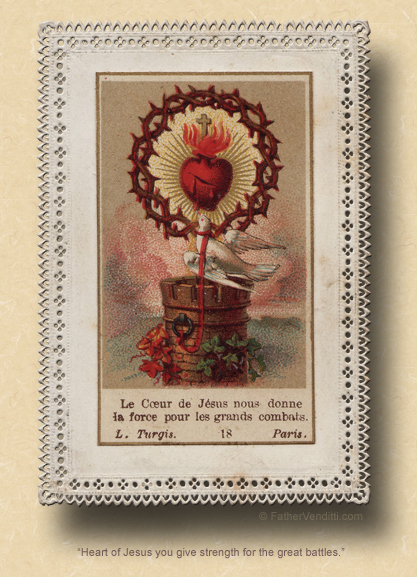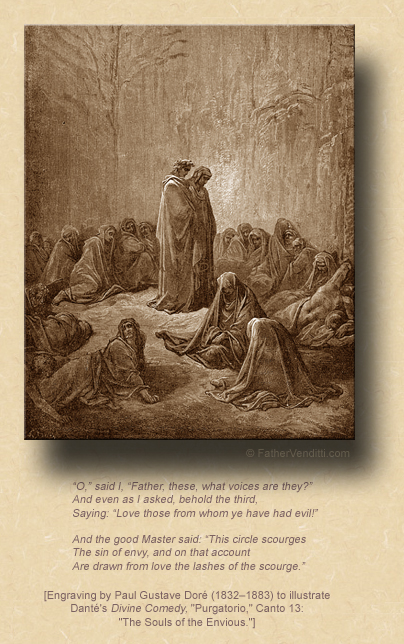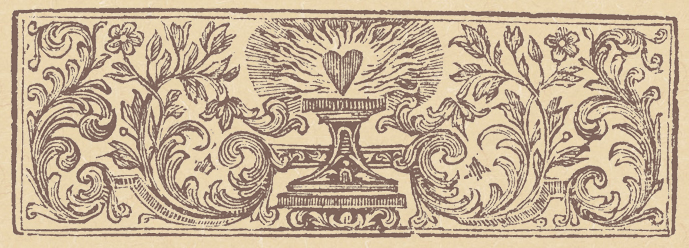Pray for the Dead and the Dead Will Pray for You.
The Thirtieth Friday of Ordinary Time; or, the Memorial of Saint Martin de Porres, Religious.*
Lessons from the primary feria, according to the ordinary form of the Roman Rite:
• Romans 9: 1-5.
• Psalm 147: 12-15, 19-20.
• Luke 14: 1-6.
|
If a Mass for the memorial is taken, lessons from the feria as above, or from the proper:
• Philippians 4: 4-9.
• Psalm 131: 1-3.
• Matthew 22: 34-40.
…or, any lessons from the common of Holy Men & Women for Religious.
|
The Twenty-First Friday after Pentecost.
Lessons from the dominica,** according to the extraordinary form of the Roman Rite:
• Ephesians 6: 10-17.
• Psalm 89: 1-2.
• Matthew 18: 23-35.
The Twenty-First Friday after Pentecost; the Feast of the Holy Martyrs Acepsimas, Bishop, Joseph, Priest, & Aeithalas, Deacon; and, the Commemoration of the Foundation of the Church of the Holy Great Martyr George in Lydia.***
First & third lessons from the pentecostarion, second & fourth from the menaion for the martyrs, according to the Ruthenian recension of the Byzantine Rite:
• Colossians 4: 2-9.
• Ephesians 6: 10-17.
• Luke 11: 47—12: 1.
• Matthew 10: 16-22.
FatherVenditti.com
|
 8:45 AM 11/3/2017 — Today is, of course, the First Friday of the month, on which we typically honor the Most Sacred Heart of Jesus with a Holy Hour, which begins directly after Holy Communion. Inasmuch as the month of November is dedicated especially to the Holy Souls in Purgatory, we will replace the Litany of the Sacred Heart with the Litany for the Holy Souls, which you may have not prayed before. During the rest of your time with our Lord, I ask you to remember the Holy Souls in your prayers, as well as all the victims of terrorism and persecution, particularly religious persecution, around the world. The Holy Hour will end with Benediction at 1:30. And because our attention is focused on the faithful departed, I would like to set aside both today’s Scripture lessons and the day’s wonderful saint to expand a little on the thoughts I shared with you yesterday on All Souls day. 8:45 AM 11/3/2017 — Today is, of course, the First Friday of the month, on which we typically honor the Most Sacred Heart of Jesus with a Holy Hour, which begins directly after Holy Communion. Inasmuch as the month of November is dedicated especially to the Holy Souls in Purgatory, we will replace the Litany of the Sacred Heart with the Litany for the Holy Souls, which you may have not prayed before. During the rest of your time with our Lord, I ask you to remember the Holy Souls in your prayers, as well as all the victims of terrorism and persecution, particularly religious persecution, around the world. The Holy Hour will end with Benediction at 1:30. And because our attention is focused on the faithful departed, I would like to set aside both today’s Scripture lessons and the day’s wonderful saint to expand a little on the thoughts I shared with you yesterday on All Souls day.
In November, more than any other month of the year, Holy Mother Church acts like a good mother by directing our thoughts toward the faithful departed. Yesterday we touched on this in relation to the Virtue of Hope, which I keep telling you is the “forgotten virtue”; but, I had chosen, as the first lesson for that Mass, the passage from Second Maccabees which serves as the Scriptural basis for the Church's whole theology regarding the reality of Purgatory and the place of the faithful departed in the Communion of the Saints; and, I should like to look at that passage with you in some detail today, so please bare with me as I repeat it for you:
And now, recalling his men from the pursuit, he made his way to the city of Adollam; the week had gone round, and here, duly cleansed from defilement, they kept the sabbath. Next day, with Judas at their head, they went back to recover the bodies of the slain, for burial among their own folk in their fathers’ graves; and what found they? Each of the fallen was wearing, under his shirt, some token carried away from the false gods of Jamnia. Here was defiance of the Jewish law, and none doubted it was the cause of their undoing; none but praised the Lord for his just retribution, that had brought hidden things to light; and so they fell to prayer, pleading that the sin might go unremembered. Judas himself, their gallant commander, gave public warning to his men, of fault they should evermore keep clear, with the fate of these transgressors under their eyes. Then he would have contribution made; a sum of twelve thousand silver pieces he levied, and sent it to Jerusalem, to have sacrifice made there for the guilt of their dead companions. Was not this well done and piously? Here was a man kept the resurrection ever in mind; he had done fondly and foolishly indeed, to pray for the dead, if these might rise no more, that once were fallen! And these had made a godly end; could he doubt, a rich recompense awaited them? A holy and wholesome thought it is to pray for the dead, for their guilt’s undoing (2 Maccabees 12: 38-46 Knox).
Now, the historical context of the two books of Maccabees is the revolt of the Jews, led by Judas Maccabeus, against their pagan captors. This can be a little confusing if you attempt to read them straight through, since the one is not a sequel to the other; in fact, the human author of Second Maccabees tells us that his book is really an abridgment of a five-volume history of the Jewish revolt which no longer survives. Nevertheless, the book is filled with a lot of important theology, not the least of which being that it's the first mention in Holy Writ of a belief in the resurrection of the dead, albeit in a non-Christian context. You might recall, from a few days ago, when we looked at the sub-plot beneath our Lord's frequent sparring matches with the Sadducees and the Pharisees, and how these two groups of rabbis were very different in their theology:  the Sadducees represented the “old guard,” the guardians of Jewish tradition which did not believe in a well-defined after-life and which restricted Jewish worship to the Temple in Jerusalem; the Pharisees were a new group who introduced a lot of innovations that upset the Sadducees, such as the Synagogue service and, most particularly, the notion of an after-life and a resurrection from the dead. In the practice of their religion, our Lord and His disciples were clearly Pharisees, as they worshiped regularly in the Synagogue and preached a resurrection; and, it's here in Second Maccabees, just sixty years or so before our Lord's incarnation, that we have the first appearance in Scripture of this Pharisaical tradition. the Sadducees represented the “old guard,” the guardians of Jewish tradition which did not believe in a well-defined after-life and which restricted Jewish worship to the Temple in Jerusalem; the Pharisees were a new group who introduced a lot of innovations that upset the Sadducees, such as the Synagogue service and, most particularly, the notion of an after-life and a resurrection from the dead. In the practice of their religion, our Lord and His disciples were clearly Pharisees, as they worshiped regularly in the Synagogue and preached a resurrection; and, it's here in Second Maccabees, just sixty years or so before our Lord's incarnation, that we have the first appearance in Scripture of this Pharisaical tradition.
So, here in Second Maccabees we find Judas Maccabeus discovering, on the bodies of his fallen soldiers, evidence that they had lapsed into pagan practices, and he becomes convinced that this is why they lost the battle and were killed: God was punishing them for having abandoned their faith. So, he orders that a collection be taken up, and that this be sent to Jerusalem so that sacrifices might be offered in the Temple for the repose of their souls, so that, even after death, they might be released from punishment. Not only does it point to the existence of a state of punishment and purification which is not eternal—which we call Purgatory—but also points to the fact that these souls can and are helped in that process by the prayers and sacrifices of the living. And it shouldn't require too much mental gymnastics to see how Holy Mother Church has preserved this Biblical tradition, as we are well familiar with the custom of making a donation to have the Holy Sacrifice of the Mass offered for the repose of the souls of those we have lost, so that the real Sacrifice of the true Altar, of which the sacrifice in the Temple was only a symbol, can speed these souls on their journey and keep them safe until the final resurrection.
And as you all know, the early Christians in Rome, fleeing official persecution, often gathered in the city's underground cemeteries to offer the Holy Sacrifice in secret; and, as the persecutions grew in their ferocity, those catacombs began to fill with the bodies of the saints. More often than not, the Holy Sacrifice was offered using the tombs of these saints as altars, which would lead to the practice of embedding a relic of a martyr in every consecrated altar, a practice the Church continues to observe to this day. Every day, I announce the intention for which the Holy Sacrifice as been requested; and, while it's not always for the dead, often it is. And we know that we, too, can give a donation to have a Mass offered for our intentions, the intentions of others and, most appropriately, for the souls of our loved ones who have passed.
So, on this First Friday of the month of November, I encourage you to remember in your Holy Hour today the souls of the faithful departed, that, through our prayers and the Most Holy Sacrifice of our Lord's Body and Blood, our Blessed Lord will speed their souls on their journey and keep them safe until the end of all things, when this world will pass away, and we shall all see our God face to face.

* Born in in Lima in 1579 of a Spanish father and a black slave mother, and trained from his youth as an apprentice barber-surgeon, Martin de Porres professed vows as a Domincan lay brother, and spent his religious life providing medical care to the sick and poor, especially African slaves. Particularly devoted to the Blessed Eucharist, he was a close personal friend of St. Rose of Lima. He died in 1639, and is venerated as the Patron Saint of social justice and peoples of mixed race.
** In the extraordinary form, on ferias outside privileged seasons, the lessons come from the previous Sunday; however, last Sunday, being the last Sunday of October, the Twenty-First Sunday after Pentecost was displaced by the Feast of Christ the King. These, then, are the lessons that would have been read on the Twenty-First Sunday.
*** Acepsimas, Joseph and Aeithalas died for Christ in Persia under King Sapor: Acepsimas in 378, Joseph and Aiethalas in 379.
The Feast of the Dedication of the Church of St. George in Lydia was first celebrated by Emperor Constantine the Great. It is in this church that the relics of the Martyr are kept.
|

